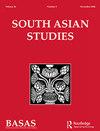The Told and Untold
IF 0.7
0 ASIAN STUDIES
引用次数: 0
Abstract
Believed to be an eye-witnessed report by Xuanzang 玄奘 (c.602–664 CE), the Datang Xiyu ji has long been held up in the western scholarship as a handy guide for the historical geography of South Asia and a standard source for identifying archaeological sites since the pioneer archaeologist Alexander Cunningham (1814–1893). Strangely, over a century of using the Xiyu ji has generated little critical awareness among archaeologists who have too often taken the text for face values. Indeed, an examination of the text will demonstrate that not all the description from the text is firsthand, at least so for around one-fifth of the countries not visited by Xuanzang. Yet it does not mean that Xuanzang is to be blamed. The production of the Xiyu ji was more complex than that of a general travelling record, which associates the text to the genre of official geographical writing. It was brought into being in response to an expanding empire. The edited ‘itinerary’ and the incorporation of secondary sources thus pose outstanding questions for researchers who might assume that they were following the steps of the pilgrim and urge us to reconsider the current conception of and approach to this document.被告知的和未被告知的
《大唐西舆记》被认为是玄奘(公元602 - 664年)亲眼所见的报告,自先驱考古学家亚历山大·坎宁安(1814-1893)以来,一直被西方学者视为南亚历史地理的方便指南和确定考古遗址的标准资料。奇怪的是,使用了一个多世纪的《西语集》并没有引起考古学家的批评意识,他们往往只看重文本的表面价值。事实上,对文本的研究将表明,并非文本中的所有描述都是第一手的,至少对于玄奘没有访问过的五分之一的国家是这样。但这并不意味着玄奘是罪魁祸首。《西舆记》的制作比一般的旅行记录更为复杂,后者将文本与官方地理写作类型联系起来。它是为了应对一个不断扩张的帝国而产生的。因此,编辑过的“行程”和二手资料的合并为研究人员提出了一些悬而未决的问题,这些研究人员可能会认为他们遵循了朝圣者的步骤,并敦促我们重新考虑当前对这份文件的概念和方法。
本文章由计算机程序翻译,如有差异,请以英文原文为准。
求助全文
约1分钟内获得全文
求助全文

 求助内容:
求助内容: 应助结果提醒方式:
应助结果提醒方式:


